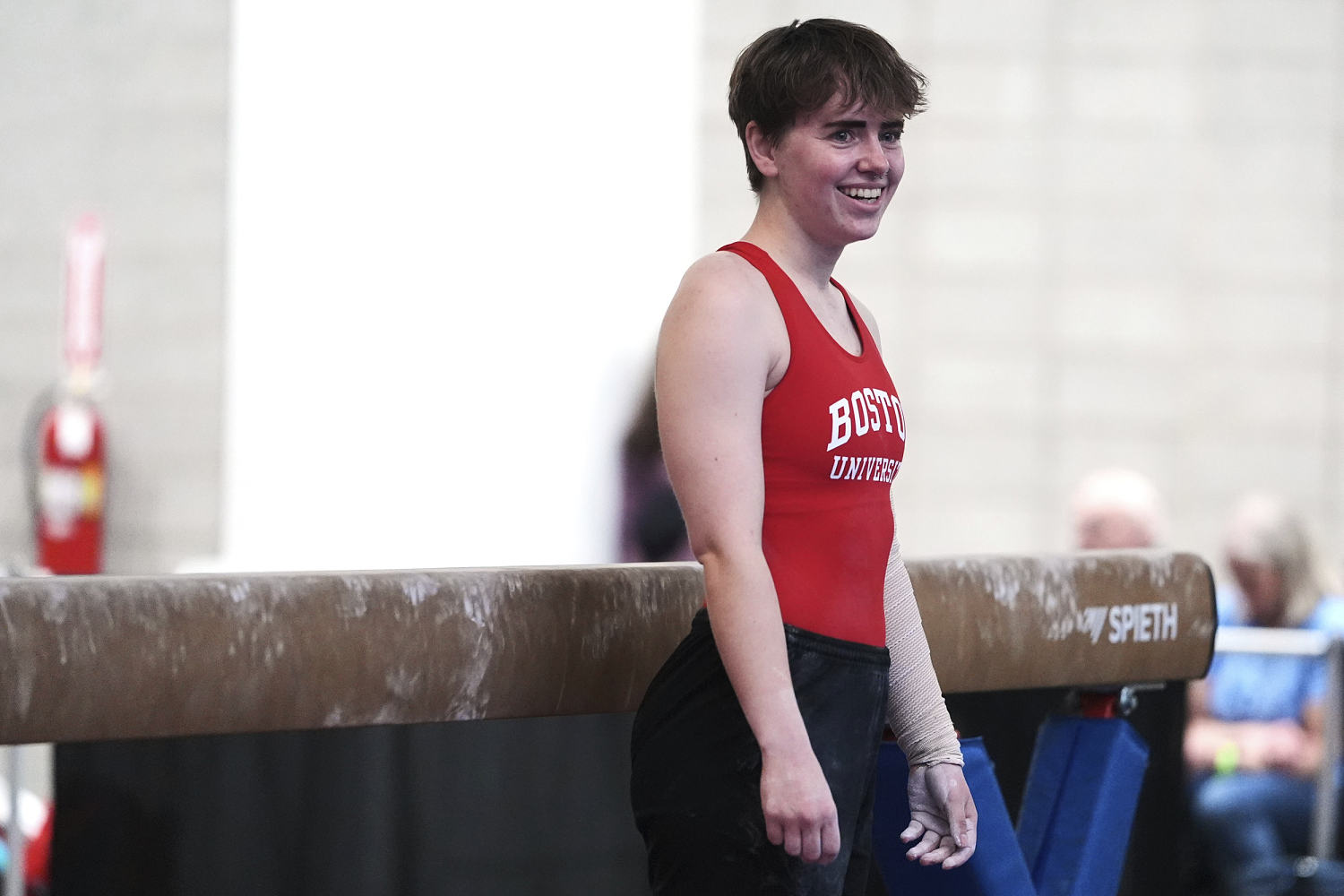Trans athletes are under more scrutiny than ever. Some have found a safe space in gymnastics

That includes, but is hardly limited to, being as gender-inclusive as possible.
During local NAIGC meets, for example, there are no gender categories. Athletes compete against every other athlete at their designated skill level, which can run from novice/developmental routines to ones that wouldn’t look out of place at an NCAA Division I meet.
Gymnasts can also hop on whatever apparatus they want. Women on parallel bars. Men on the balance beam. Just about anything goes. At its annual national meet, the NAIGC even offers the “decathlon,” which allows athletes of all gender identities to compete against each other across all 10 disciplines — six in men’s, four in women’s — of artistic gymnastics.
“(We want) people to be able to continue doing gymnastics into adulthood in a way that feels comfortable and safe and supportive for them,” said Ilana Shushanky, NAIGC’s director of operations.
A challenging climate
The approach comes as transgender athletes find themselves the target of increasingly heated rhetoric.
President Donald Trump signed an executive order in February that gave federal agencies wide latitude to ensure entities that receive federal funding abide by Title IX in alignment with the Trump administration’s view, which interprets “sex” as the gender someone was assigned at birth. A day later, the NCAA said it would limit competition in women’s sports to athletes who were assigned female at birth.
The message to the transgender community at large was clear: You do not belong here. Several trans and/or nonbinary members of the NAIGC, which is independently run and volunteer-led and does not rely on federal money to operate, felt it.
Multiple trans or nonbinary athletes who spoke to The Associated Press said they pondered quitting following last fall’s election, despondent over what at times feels like an increasingly hostile environment toward their community.
None did. One viewed stepping away as ceding power over a part of who they are to someone else. Another pointed to the social aspect of gymnastics and how vital the feeling of acceptance in their home gym was to maintaining proper mental and emotional health.
“Part of my identity is as an athlete and to see myself as strong and able to do hard things,” said Wes Weske, who is nonbinary and previously competed in the decathlon before recently graduating from medical school. “I think (gymnastics) really helped my self-image and was just an important part of understanding myself.”
A sense of normalcy
That sense of belonging was everywhere at the NAIGC’s national competition in early April. For three days, more than 1,700 athletes, including a dozen who registered their gender as “other,” turned a convention center hall in downtown Pittsburgh into what could best be described as a celebration.
Not just of gymnastics. But of diversity. And inclusion. It all looked and felt and sounded like any other large-scale meet. Cheers from one corner following a stuck dismount. Roars from another corner encouraging a competitor to hop back up after a fall.



